The Baihetan Dam (Chinese:白鹤滩大坝) Hydropower Station is located on the Jinsha River in China. Between Ningnan County in Sichuan Province and Qiaojia County in Yunnan Province. Baihetan means white crane beach.
Baihetan Dam is under construction and is currently the largest hydropower station under construction in the world.
This hydropower station has comprehensive benefits such as power generation, flood control, sand blocking, improvement of downstream shipping conditions and development of navigation in the reservoir area.
The normal storage level of the reservoir is 825 m, and the corresponding storage capacity is 20.6 billion m³. The underground powerhouse is equipped with 16 units with an installed capacity of 16,000 MW and an average annual power generation of 60.24 billion kWh.
It total cost 177.8 billion yuan (about US $26 billion ).
Baihetan Hydropower Station has already started generating electricity on June 28, 2021.
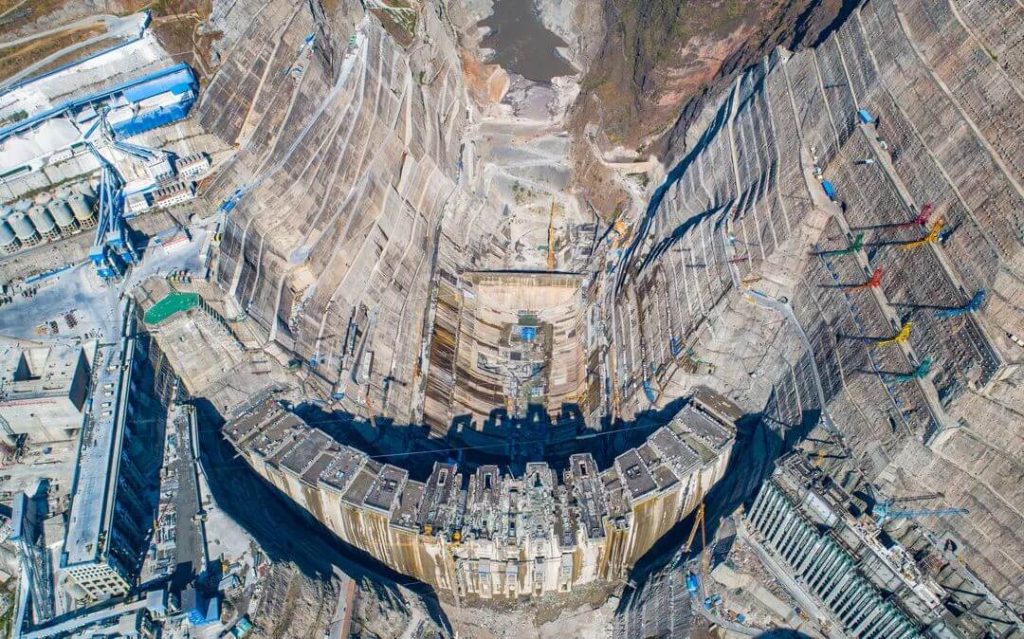
History
Plan started
- As early as 1958, the Chinese government planned to build a hydropower station at Baihetan on the Jinsha River.
- In June 1959, the Czechoslovakian expert group and the domestic expert group went to Qiaojia for an on-site survey and selected the site for the Baihetan Power Station.
- In 1961, due to the breakdown of Sino-Soviet relations and China’s “three-year difficult period”, the preliminary work of the Baihetan Hydropower Station was stopped and the survey team was withdrawn.
- Later, because of the start of China’s “Cultural Revolution”, the construction of the Baihetan Power Station was once again shelved.
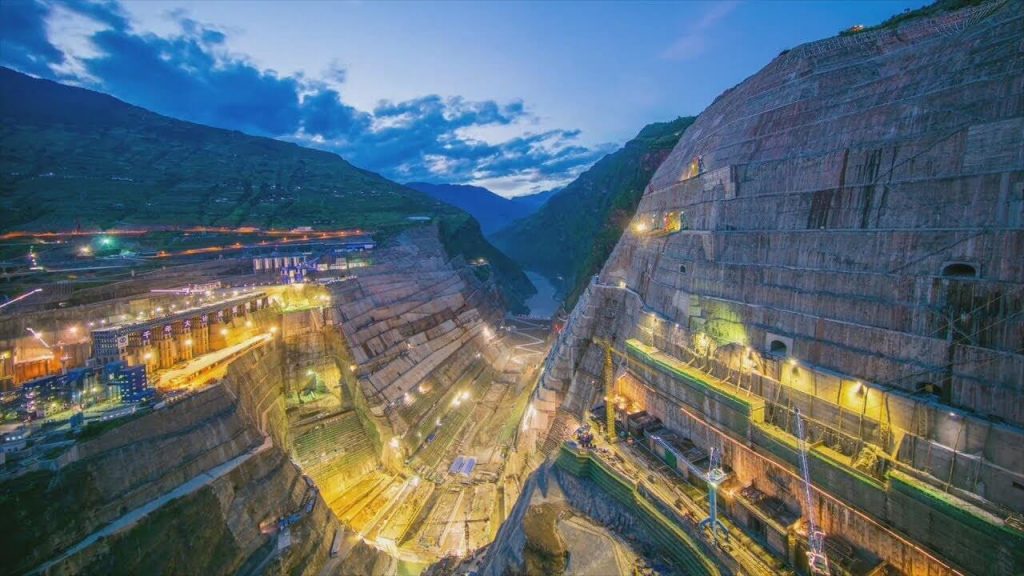
Preliminary preparation
- Until 2002, the State Planning Commission of China formally approved the hydropower development and construction plan for the lower reaches of the Jinsha River and agreed to start construction of the Xiluodu Dam and Xiangjiaba Dam in 2005.
- In 2004, Baihetan Hydropower Station stopped the project due to a series of comprehensive factors such as environmental pollution.
- In 2007, construction of auxiliary roads around Baihetan started.
- In 2008, the original planned construction of the Baihetan Hydropower Station began, but due to a magnitude 8 earthquake in Sichuan, China, the construction progress of the Baihetan Hydropower Station slowed down.
- In December 2008, the construction of the Baihetan site began.
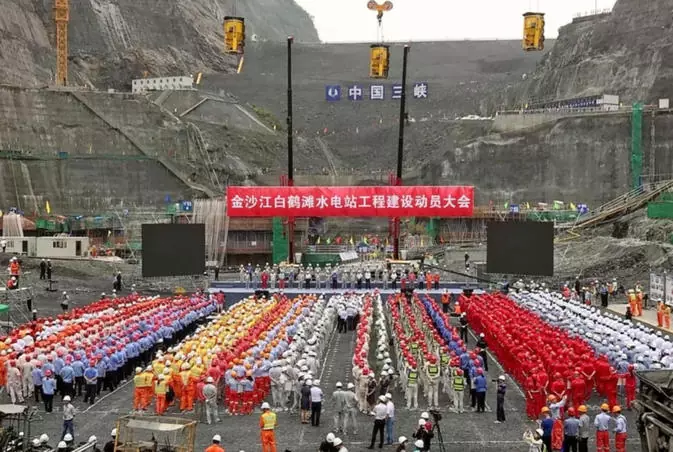
Formal construction
- On October 27, 2010, the Baihetan Hydropower Station officially started construction.
- On February 18, 2011, the investigation of the physical indicators of the Baihetan Hydropower Station resettlement started.
- At the end of 2013, the diversion tunnel has flow conditions.
- In November 2014, the Jinsha River was officially closed.
- On May 1, 2016, the civil construction and metal structure installation project of the left bank of Baihetan dam started.
- On August 3, 2017, the full construction of the main dam of Baihetan Hydropower Station began.
- On October 27, 2018, the first water guiding mechanism of the Baihetan Hydro-generator Unit passed the acceptance inspection in Harbin, China. This is the world’s largest hydropower unit with a single power of 1,000 MW, the highest level made in China.
- On January 12, 2019, the first 1,000 MW turbine runner used in the Baihetan Power Station, the world’s largest hydropower station under construction, was completed at Dongfang Electric’s Baihetan Runner Processing Plant. The turbine unit is 3.92 meters high, 8.62 meters in diameter, and weighs 350 tons.
- At 0:00 on November 26, 2019, the intelligent construction screen of Baihetan Hydropower Station showed that 72 silos of concrete were poured in November, with a volume of 273,000 cubic meters, which broke the highest single-month record since the dam was poured and created a single-month pouring of similar projects World record.
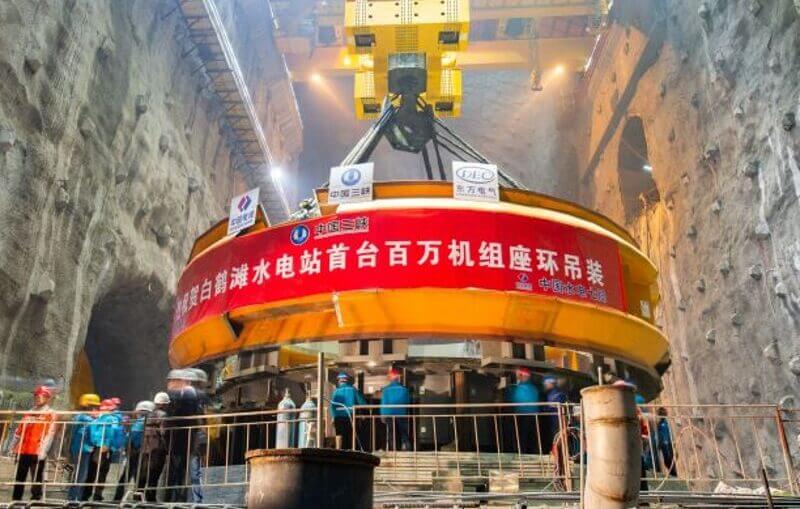
Power generation equipment installation
The main construction of the 2020 Baihetan Power Station has basically been completed, and the installation of the generator has begun.
- On June 21, 2020, the No. 1 runner on the left bank of Baihetan Hydropower Station was successfully installed.
- On August 18, 2020, Baihetan Hydropower Station successfully hoisted the world’s first million-kilowatt hydroelectric generator rotor.
On September 9, 2020, the runner of Unit 2 on the left bank of Baihetan Hydropower Station was successfully hoisted. On the same day, the rotor of the first unit with a unit capacity of 1 million kilowatts on the right bank of Baihetan Hydropower Station was successfully hoisted and installed. - On November 28, 2020, Unit 15 on the right bank of Baihetan Hydropower Station was successfully hoisted.
- On December 29, 2020, Unit 3 on the left bank of Baihetan Hydropower Station was successfully hoisted.
- On January 31, 2021, Unit 16 of Baihetan Hydropower Station was successfully hoisted.
- On April 25, 2021, Unit 13 of Baihetan Hydropower Station was successfully hoisted.
- June 28, 2021: The first batch of units of the Baihetan Dam started to generate electricity. The hydroelectric power station is in operation.
The Baihetan Hydropower Station plans to realize the commissioning of all generating units in July 2022.
Opening ceremony
- On February 5, 2021, Baihetan Hydropower Plant was officially inaugurated.
- On April 7th of the same year, Baihetan Hydropower Station officially began to store water.
- On April 24 of the same year, the water storage elevation of Baihetan Hydropower Station exceeded 720 meters.
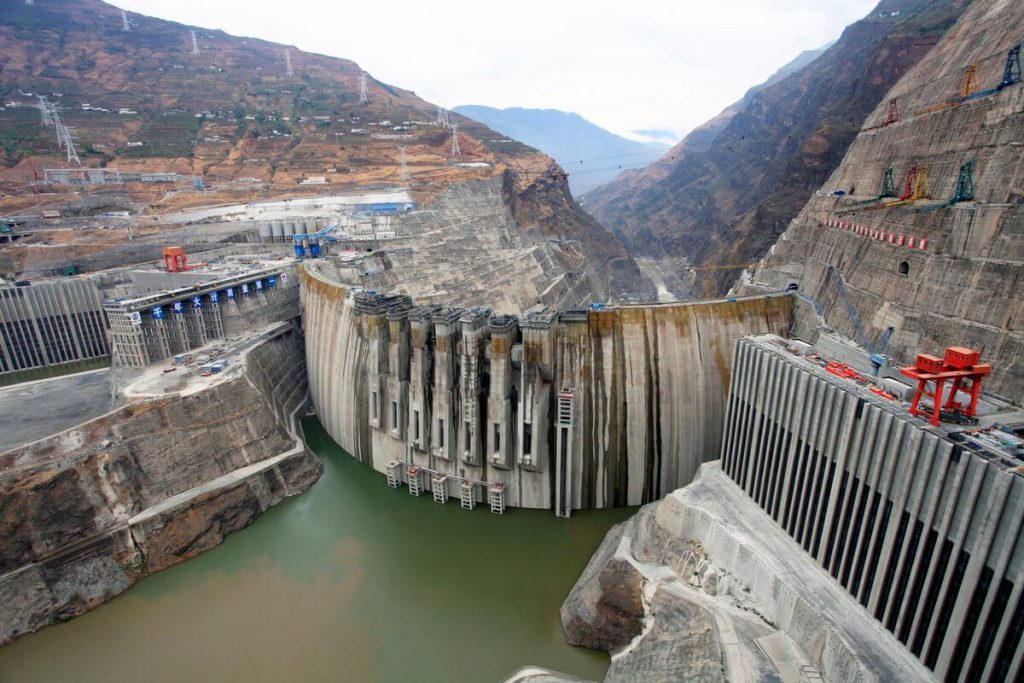
Latest progress
- The first batch of units will be put into operation in July 2021, and the project will be completed in 2023.
Baihetan Hydropower Station
The Baihetan Hydropower Station has a total installed capacity of 16 million kilowatts and an average annual power generation of 62.443 billion kilowatt hours, which is basically equivalent to the electricity consumption of a super modern city in one year.
There are 8 1,000 MW hydropower units installed on both sides of the power station. A single Baihetan million unit is more than 50 meters high and weighs more than 8,000 tons, which is equivalent to the weight of the Eiffel Tower in France.
The runner, as the “heart” of the hydropower unit, is the most difficult component of the entire unit for research and development and manufacturing, and it is also the core component of the entire unit. The entire runner is composed of 15 blades, each weighing 11 tons.
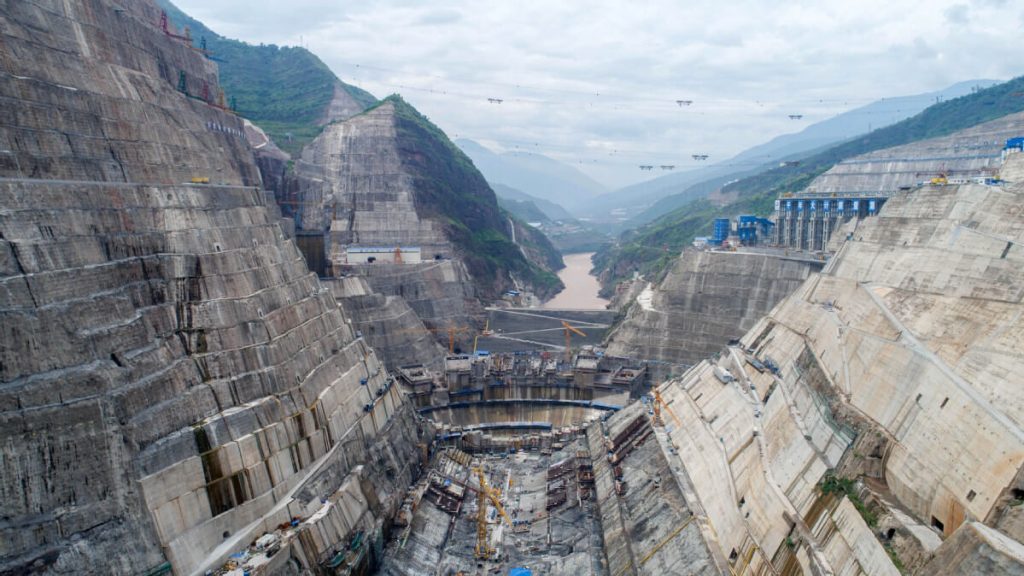
Baihetan Dam
The type of dam is a concrete hyperbolic arch dam with a height of 289 meters, a crest height of 834 meters, a top width of 13 meters and a maximum bottom width of 72 meters.
The total concrete volume of the dam is 8.1 million cubic meters, which is divided into 31 dam sections and more than 2,300 warehouses.
The total water thrust of the dam has reached 16.5 million tons, making it one of the high arch dams with the most complex geological conditions in China.
The reservoir has annual regulating capacity, the normal water storage level is 825 meters, and the flood control limit water level is 785 meters. The reservoir controls a drainage area of 430,000 square kilometers, accounting for 91% of the Jinsha River drainage area.
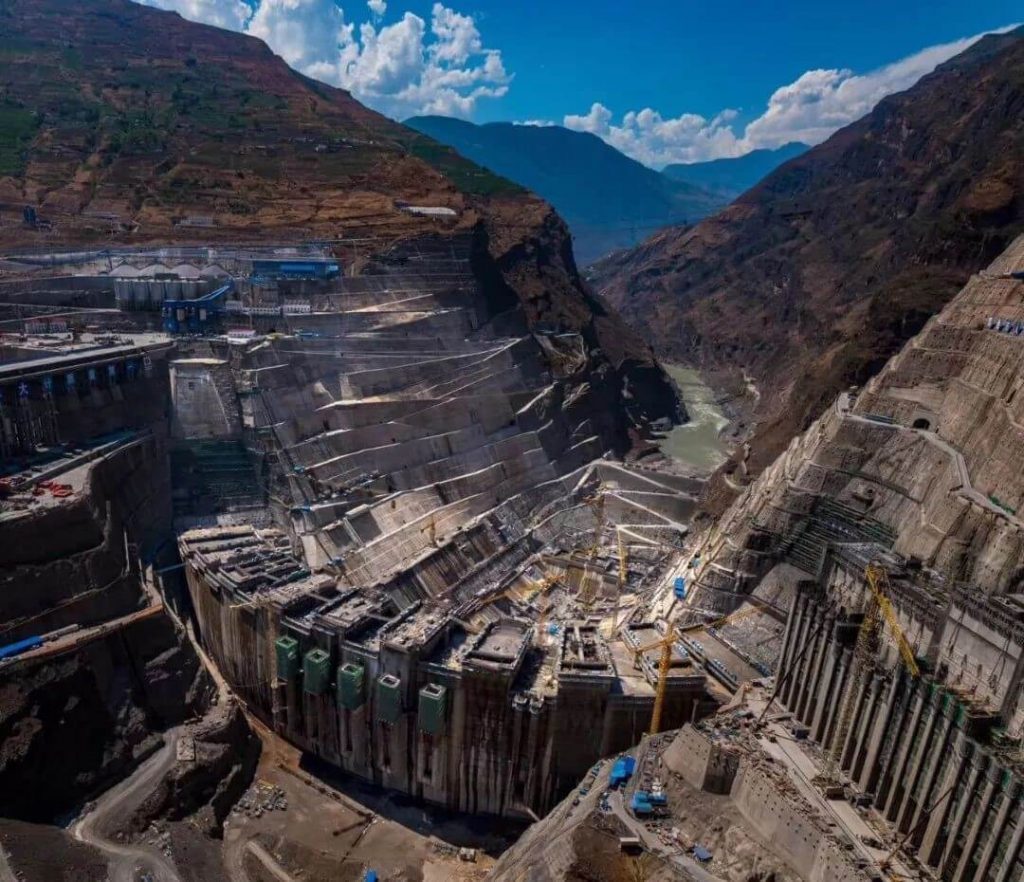
Underground caverns
The total length of various caverns of Baihetan Hydropower Station is 217 kilometers, and the excavation volume of caverns reaches 25 million cubic meters.
The underground powerhouse is 438 meters long, 34 meters wide above the rock beam, 31 meters wide below the rock beam, and 88.7 meters high. It is the largest underground cavern group in the world’s hydropower projects.
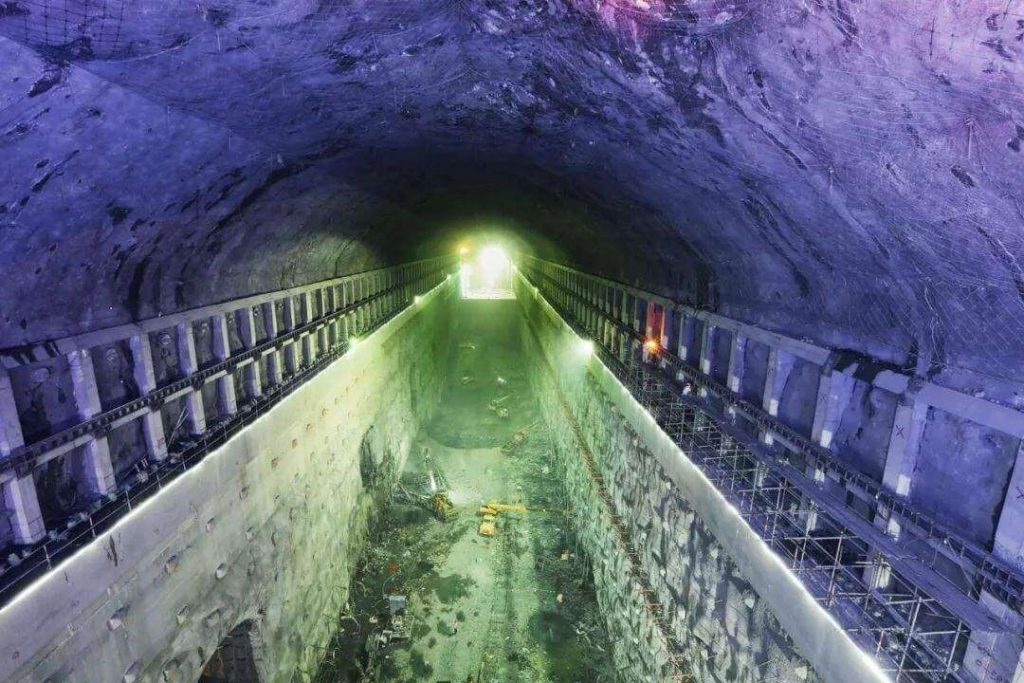
Baihetan Hydropower Station is designed with 8 cylindrical tailwater surge tanks with a diameter of 42 to 48 meters and a height of 112 to 128 meters. It is the largest diameter cylindrical tailwater surge tank group in the world’s hydropower projects.
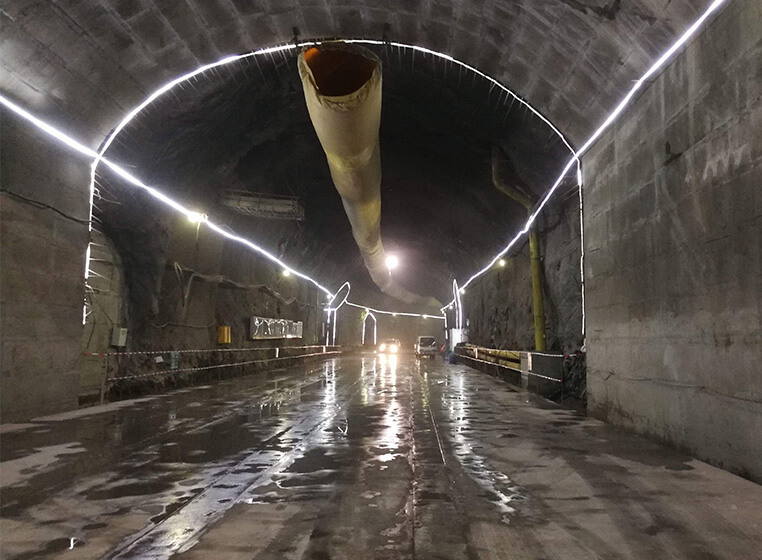
Immigration planning
Baihetan is a world-class super-large water conservancy project, which has a huge impact on the local geographical environment, so it has caused a large number of immigrants.
Due to the rising water level in the upstream and the safety of the downstream, the total number of immigrants in it is 110,296, of which 3,280 are in the construction area.
After the project is completely completed, 22,000 mu/14.6 km² of cultivated land and 102,000 mu/68 km² of forest land will be submerged
Immigration progress
- On December 31, 2010, China’s Yunnan and Sichuan provinces officially issued a warehouse closure order. The warehouse closure order came into effect on January 1, 2011, prohibiting people from entering the warehouse area.
- On January 16, 2020, the Xiangbiling resettlement site leveling project of Baihetan Hydropower Station was completed.
- On November 18, 2020, all 215 people from 49 households in the Ma Li resettlement site in Baihetan reservoir area moved into their new homes.
- At the beginning of December 2020, the construction of resettlement houses in 8 resettlement areas in the reservoir area of Qiaojia County, Yunnan, was completed.
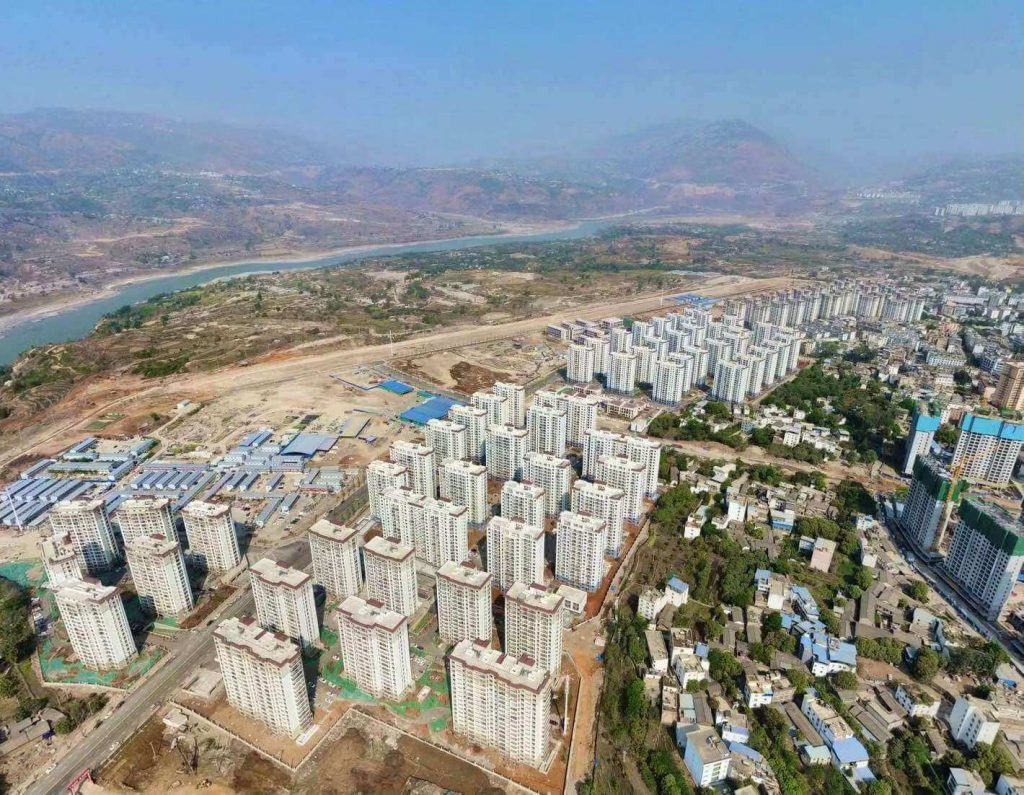
Baihetan Dam Data
- Country
- China
- Region
- East Asia
- Status
- Under Construction
- Official name
- 白鹤滩大坝
- Other name(s)
- 白鹤滩水电站, Baihetan Hydropower Station
- Location
- Between Sichuan and Yunnan, China
- Contractor
- China Hydropower Fourth Bureau, Eighth Bureau/China Gezhouba Group, etc.
- Designer(s)
- East China Survey, Design and Research Institute Co., Ltd.
- Purpose
- Power, flood control, navigation, Drought resistance
- Cost
- 177.8 billion yuan ( US $26 billion )
- Began
- Oct-27, 2010
- Total Duration
- 12 years
- Dam height
- 948 ft (289 m )
- Dam Length
- 686 ft (209 m )
- Installed capacity
- 16000
- Turbines
- 16 × 1,000 MW
- River
- Jinsha River
- Total capacity
- 20,600,000,000 m³
- Reservoi Surface elevation
- 2707 ft (825 m )
View Baihetan Dam on Google Satellite Map
Google satellite maps allow you to see building details more clearly, including natural landscapes such as mountains, rivers, deserts, sea and man-made engineering buildings.
If you are very interested in this engineering building, it is a good idea to click below Google Map icon. We will help you jump to the corresponding location of this building or engineering on Google satellite map.
View Baihetan Dam on 720yun
720yun is a panoramic image service provider, where you can see the panoramic image of the Engineering Building, let you know more about the Engineering Building.































































